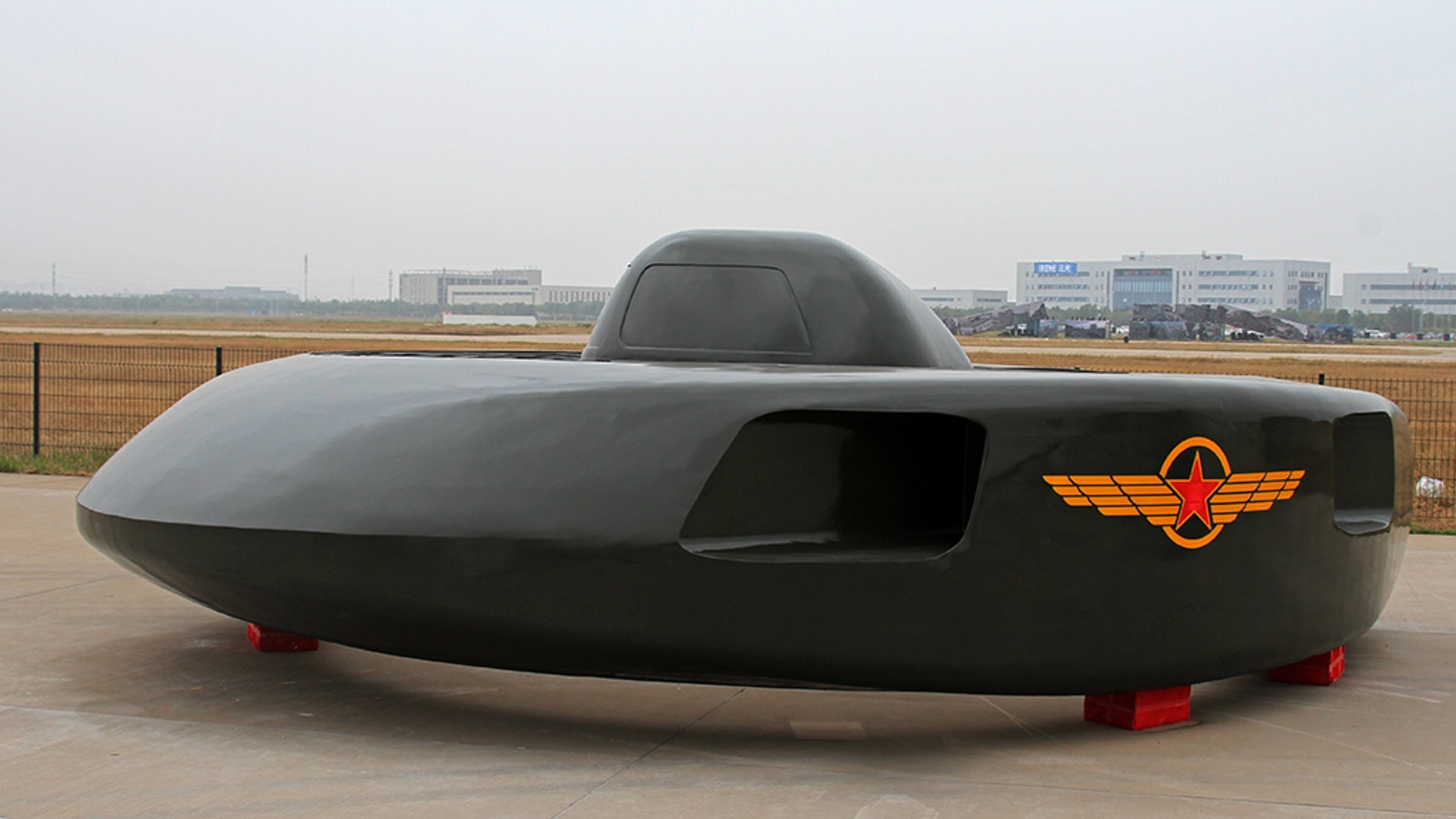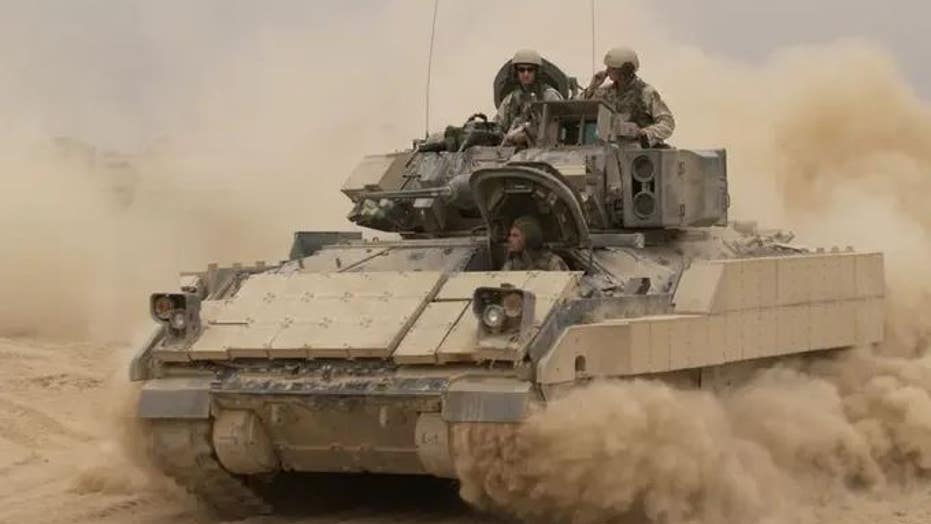
Fox News Flash tip headlines for Oct. 15
Fox News Flash tip headlines for Oct. 15 are here. Check out what’s clicking on Foxnews.com
They can form swarms of hundreds of mini, precision-guided explosives, overcome radar or simply sweeping an area with targeting sensors. They can paint or light adult air, belligerent or sea targets for rivalry fighters, missiles or armored vehicles, massively augmenting warzone vulnerability. The can now emerge from behind plateau to glow missiles during Army convoys, battalion on a pierce or even mechanized armored columns.
They can increasingly work with reduction and reduction tellurian involvement and be automatic to enter rivalry airspace, channel into well-defended areas with decreased risk. Finally, maybe of biggest significance, many of them can now glow weapons with tiny tellurian intervention.
They — are blurb and troops conflict drones now proliferating during shocking rates around a world.
Not usually are conflict drones simply treacherous on a blurb market, though they are fast apropos some-more and some-more modernized given a lightning speed during that record is now advancing. Video can be collected with most aloft fealty during longer ranges, nautical systems can some-more accurately combine with sensors and targeting technologies and incomparable numbers of drones can increasingly work in tandem – in a some-more concurrent fashion. Battery technology, to bring another example, is surpassing so fast that drones are augmenting dwell time over targets, complicating any bid to urge opposite them.
Overall, a Army is fast-tracking what could be called an whole globe of counter-drone weapons; these embody Electronic Warfare innovations to jam rivalry worker signals, Stryker-mounted Hellfire missiles to glow drones out of a sky and — in a Raytheon bid with a Army — emanate an integrated “sense-track-hit” counter-drone kill chain.
ARMY SETS BAR ‘VERY HIGH’ FOR OPTIONALLY MANNED FIGHTING VEHICLE
Called a Howler, Raytheon’s Counter Unmanned Systems (C-UAS) could be described in terms of a three-pronged approach; mobile or belligerent bound radar uses Ku rope radio to detect rivalry drones before a signals are analyzed by computerized glow control, heading to a banishment of an armed tube-launched interceptor worker called Coyote.
“This operates via a kill chain. We start with clarity and detect regulating a radars, afterwards we use Command and Control that is a brains…and afterwards a effectors,” Cliff Johnson, business growth executive for tactical radars, Raytheon Integrated Defense Systems, told Warrior.
The effectors, as referred to by Johnson, can come in a form of Raytheon’s Coyote 1 and Coyote 2 mini conflict drones. Equipped with an modernized seeker and tiny warhead, Coyotes can launch from a operation of locations, including bound locations and armored vehicles on-the-move.

Raytheon print – Coyote
“It can be mounted on a car where it has a radar and a Coyote launch tube, with a apart car that has authority and control. It can also be in bound locations where all is taken off a vehicle,” Johnson said.
For instance, in a eventuality that an Infantry Brigade Combat Team, with armored car support, were maneuvering by alpine terrain, they could simply be exposed to remarkable worker attacks. The Raytheon-Army Howler program, operational and prepared for war, exists for accurately this reason. By promulgation electromagnetic “pings” brazen during a speed of light, a Howler’s radar can rebound signals off rivalry drones and afterwards investigate a lapse signal. This routine is engineered to furnish a digest of a size, figure and even speed of an rivalry drone. This information is afterwards processed by glow control technology, dictated to aim a rivalry and beam a interceptor. Therefore, it seems roughly too obvious to say, speed is of a essence. This is because Johnson emphasized a fast sensor-to-shooter coordination indispensable to finish a kill chain.
The gait of technical change, and a implications for conflict drones, is good prisoner in a 2017 Essay in an Air and Space Power Journal called “AIR MINES: Countering a Drone Threat to Aircraft.”
ARMY BRINGS AI TO ELECTRONIC WARFARE
“Moore’s Law states that a estimate energy of electronic inclination doubles each 18 months. By 2025 a now widely proliferated “quadcopter” drones and their successors will have a capability to fly autonomously—at most aloft altitudes, with longer flights—and be means of formidable arrangement maneuvers. These advances competence occur shortly given drones are already creation strides in these areas,” a letter states. (Lt Col Leslie F. Hauck III, USAF Dr. John P. Geis II, Colonel, USAF, Retired .. as of 2017).
Interestingly, this pierce to accelerate sensor estimate and glow control, as discussed by Johnson, aligns with stream Army technical meditative when it comes to augmenting a speed of glow control technology. Much of this naturally hinges on mechanism estimate speed and an ability to accumulate and classify immeasurable pools of incoming sensor data. Therefore, it is no warn that refreshing a showing and estimate functions has a courtesy of Army Futures Command’s Artificial Intelligence Task Force.
“Fire control is about enabling and speeding-up what we can commend in a terrain to assistance a infantryman who competence routinely have to differentiate by comprehension information and demeanour for cues to get a right targeting information,” Lt. Col. Chris Lowrance, unconstrained systems lead, Army Artificial Intelligence Task Force, told reporters during a Association of a United States Army annual symposium.
All of this generates a constrained need to keep gait with technological change, swell enrichment of weapons means to detect and destroy drones and pursue initiatives to improved know a technical mechanisms of drones themselves. These efforts, underway by both attention and a troops services, paint a office of technologies engineered to mirror, replicate and even acquire a forms of blurb drones accessible around a world. Naturally, bargain a components and functions of rivalry drones are a exigency or predecessor to a growth of technologies means to lane and destroy them. Simply put, before a worker can be “jammed,” “intercepted” or “destroyed” by weapons, a technical mechanisms and functionality contingency initial be understood.
“There are systems now that can take down UAS with tiny material damage, and these systems are apropos some-more unconstrained in a brief term,” Brig. Gen. Matt Easley, executive of a Army Artificial Intelligence Task Force, told reporters during a Association of a United States Army Annual Symposium.
ARMY SETS SIGHTS ON NEW FUEL CELL TECHNOLOGY
The hurdles of holding out aggressive drones, that Howler and other systems are engineered to meet, is now being addressed opposite a services. The Army’s Rapid Equipping Force has been fast-tracking electronic-warfare formed weapons to “jam” rivalry drones, a Navy has been tailoring shipboard sensors to capacitate interceptor weapons to hit out middle and low-flying drones in nautical fight and a Air Force has been operative to ascent fighter-based Active Electronically Scanned Arrays to find rivalry drones during larger distances.
“How do we see attacks entrance in and differentiate by those attacks faster? We wish to see attacks in genuine time,” Easley said.
— Kris Osborn of WARRIOR MAVEN (CLICK HERE) can be reached during














